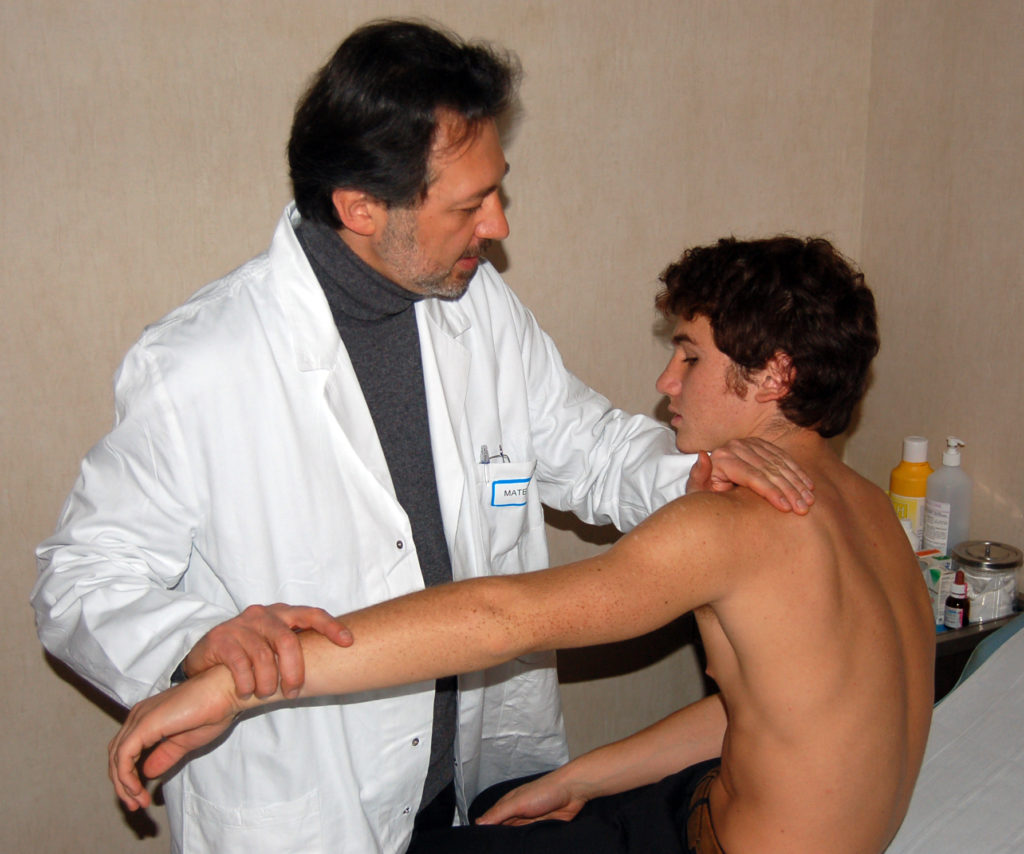Frozen shoulder
What is frozen shoulder?
Frozen shoulder, also known as ‘adhesive capsulitis’ is a condition which affects the joint capsule. The joint capsule is a watertight sac made of ligament tissue which surrounds the shoulder joint, and connects the humerus to the glenoid socket. These ligaments have a large amount of slack to allow the shoulder to make a wide range of movement without restriction. If you have frozen shoulder, the capsule becomes inflamed, thickening and swelling, and the tissue sticks together – limiting the movement of your shoulder.
There are 3 stages in this condition that can last months, or even years, although it should eventually pass on its own.
Stage 1: the shoulder starts to ache, become stiff and then very painful.
Stage 2, adhesive stage: the shoulder becomes increasingly stiff, and lack of use causes the muscles to waste.
Stage 3, recovery phase: you gradually regain movement (although maybe not completely), and the pain recedes.
What causes it?
The precise causes of frozen shoulder are still unknown, although it sometimes occurs after a shoulder or arm injury (such as a rotator cuff tear or subacromial impingement) or an operation when the arm has been immobilised for a while. There is a higher incidence of the condition in patients suffering from other conditions such as diabetes, heart/lung disease, Parkinson’s disease or if they have an overactive thyroid gland. Also, it occurs more frequently among younger women who are under stress, and are smokers. There is a theory that it may be caused by an auto-immune reaction when your immune system mistakenly starts attacking healthy tissues.
How does it feel?
Your shoulder will be very painful, and often particularly so at night. The range of movement of your arm will become progressively reduced – it will feel as if the movement is being blocked – which means that simple everyday activities like getting dressed, brushing your hair etc. become impossible.
Diagnosis
Your doctor will ask you questions about your medical history, and make a physical examination of your shoulder. In the physical exam, your doctor will try and move your arm for you – if the range of movement is the same whether the arm is moved actively (by you) or passively (by your doctor) this indicates that you have a frozen shoulder rather than a rotator cuff tear.
Your doctor may prescribe an X-ray or an MRI (magnetic resonance imaging) scan to rule out other damage to the bones and soft tissues.
Treatment – conservative
Your doctor may prescribe ice, heat, shock wave therapy, anti-inflammatory medication, and sometimes, slow-release cortisone injections combined with an anaesthetic to reduce the pain. Physiotherapy is an important part of treatment for a frozen shoulder; initially it will be aimed at getting your muscles to relax, and stretching the joint capsule and muscles, and then eventually at rebuilding any wasted muscles. You may be given exercises and stretches to do at home for several months.
Treatment – surgical
Arthroscopic capsular release: firstly, your surgeon will make two 4-5mm incisions in your shoulder. Through one he will insert a fibre-optic camera to look into the joint, and through the other, he will pass the surgical instruments. Then he will cut (or ‘release’) the scarred tissue of the capsule. At the end of the procedure the surgeon will ensure there is a good range of movement by gently manipulating your shoulder.
Rehabilitation after surgery
You should be able to go home the same day as the operation, although your doctor will advise you to wear a sling just for the first few days to protect and rest your shoulder. You will start light physiotherapy straight after the operation in order to get the joint moving again, and within 4-6 weeks you will start on more strenuous muscle rebuilding exercises.
When will I be back to normal?
Office workers should be able to go straight back to work, whereas manual workers will have to wait until they have regained a full range of movement and sufficient muscle strength for the type of work they do. You should be able to drive after about 15 days.
Light sporting activity can be resumed after about a month, depending on the arm movements required, although it may take up to 6 months to get your shoulder completely back to normal.
